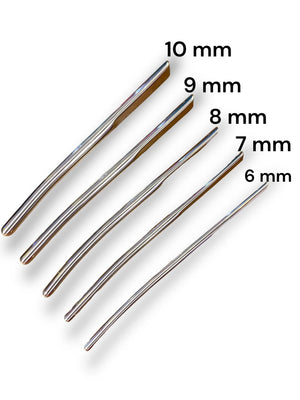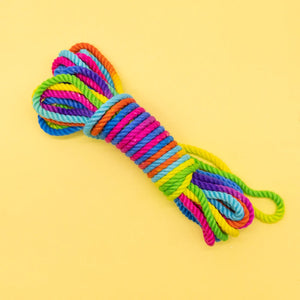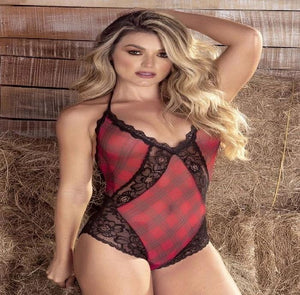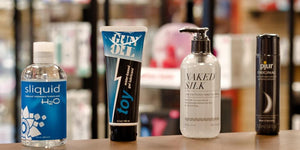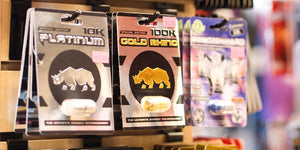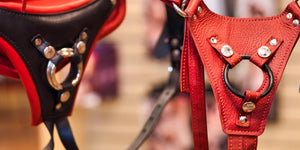Corsets for Beginners
There’s just something about a corset. Imagine a woman wearing classic jeans and a button-down shirt. Now imagine the same outfit with a corset over it. Suddenly a simple outfit becomes sexy, mysterious, and provocative.
Though no longer everyday undergarments, they do many practical things. First, they take several inches off the waistline. Second, they are great back support. Third, they can create amazing cleavage, depending on the style of the corset.
If you’re ready to have some fun, here are the basics on corsets and how to find the right fit for you.
Overbust, Underbust, or Cincher
Corsets come in three shapes: overbust, underbust, and cincher. Overbust corsets cover the breasts, while underbust corsets are short and stop just below the breasts. Overbust corsets create the enviable cleavage many women are going for when they consider buying a corset. Underbust corsets are often a better fit on shorter people, and provide fantastic waist shaping. Cinchers are narrower versions of underbust corsets designed primarily as decorative tight belts.
Boning
Boning refers to strips of metal or plastic in the corset’s seams that give the garment structure and create the hourglass figure so many of us are after. Two types of boning are used in modern manufactured corsets: flat steel boning and round spring steel boning. Some tops that call themselves “corsets” use plastic boning, but plastic boning breaks easily and is not strong enough to shape the waist. (We at Frisky Business call these tops “bodices” because they just don’t compare to a real corset.)
Flat steel-boned and spring steel-boned corsets are more expensive than plastic-boned bodices, and feel very heavy in comparison. A good corset is made of heavy fabric or leather. Lift the garment and check. If feels light, it’s probably not steel-boned. If the online description does not state what kind of boning the corset uses, beware. It’s probably plastic.
Getting the Size Right
Important things to know about corset sizes:
- Bra size is not a factor in corset sizes, and corsets don’t have cup sizes. Instead, you’ll need to know your waist measurement.
- Ignore the small-medium-large sizes on the tag. Most corset companies use European sizing standards, so their small-medium-large are MUCH smaller than the American versions. Look for the inch measurements on the tag or company size chart before you get depressed trying on a size that is doomed not to fit.
- A properly-fitted corset will measure 4 to 6 inches smaller than the wearer's natural waist. However, how many inches a corset reduces the wearer’s waist size varies depending on the cut of the corset, overbust versus underbust style, flat versus spiral steel boning, and, honestly, how much "squish" the wearer has.
- A corset is too big if it laces completely shut in the back with the grommets touching. Generally, a well-fitting corset should have about a 2- to 3-inch open space in the back laces. Once a corset laces closed, it can't be tightened any more. This is particularly important for people who are in the process of losing weight, or for those whose weight naturally fluctuates by 5 lbs or more.
Get to Know Your Waistline
Corsets are sized by waist measurements, using even numbers. Grab a sewing measuring tape and measure around your natural waistline, the narrowest part of your waist where your natural bend occurs. Don't pull the measuring tape too tightly or your measurement will be inaccurate.
Whatever that measurement is, subtract 4 and 6 from it. A properly-fitted corset will be between 4 and 6 inches smaller than your waist measurement. This will give you the sizes of corset that are most likely to fit.
Here’s an example: My waist measurement is 35 inches. Subtracting 4 gives me 31, and subtracting 6 gives me 29. A 28-inch corset or a 30-inch will probably fit me. I would try on both to see which one fit better.
Let’s Get It On
Remember the scene in Gone with the Wind where Scarlett O’Hara held on to a bedpost while Mammy tightened her corset? It’s just like that. Seriously. Unless you’re an experienced corset-wearer (or very flexible), putting a corset on will take help. I have seen people who can lace themselves into corsets, but people like that are essentially unicorns. Get a friend.
When you take it off the rack, a corset will be laced closed up the back with the excess laces tied into a pretty knotted bow at the center back. Untie the bow and loosen the laces until the back panels spread apart, but do not unthread the cord out of the grommets.
Open the front of the corset. Typically corsets close with busks (a row of metal loops that hook over metal buttons) or a zipper closure. Put the corset around you and hook the busks to close the front.
A properly-laced corset will not be laced like a shoe. Instead, the laces will be threaded in an “X” pattern, which greatly eases the tightening process. Now, get your friend to tighten the back by pulling the laces at each “X,” working from the top to the middle, and from the bottom up to the center back. This puts tension along the boning evenly rather than pulling at the laces at the middle. Once it’s as tight as you want it, have your friend tie a bow with the laces at the center back, just like you tie shoes. Do a second bow to tie up any dangling excess.
Once you’ve gotten this far, take a look. Do you like how it shapes you? Can you breathe? Can you sit down? Does it poke you in places when you do? Can you still breathe? (The breathing question is important so we ask it twice.)
Finding the perfect corset will take trial-and-error. Allow yourself at least an hour to try on different ones. Loosening, lacing, fiddling, and adjusting takes time and you’ll need a sales assistant’s help.
Care & Feeding
Once you have the perfect corset, take care of it by never, ever washing it at home or at a commercial cleaner. Spot clean it with mild detergent and get rid of odors with a fabric freshener like Febreeze. To maintain the shape, store it by draping the laces over a pants hanger and hang it in your closet.
Corsets are fun. Allow yourself to play dress up and don’t get discouraged if you don’t find the perfect fit the first time. They are like blue jeans: finding the perfect one will take some time in the dressing room and, like that perfect pair of jeans, the right corset will make you feel fabulous!
- Tags: Corsets Lingerie Shopping Guide
- Julia Eckard
